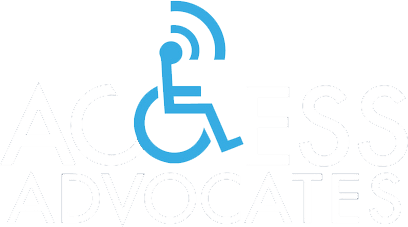 ADA Fact: Wheelchair ramps must be safe.
ADA Fact: Wheelchair ramps must be safe.
Have you ever been window shopping downtown, spotted an intriguing store but found there was no way for you to enter the store with your wheelchair? Have you made an appointment for the dentist, and when you arrive you discover there’s no way to manuever your wheelchair through the doorway, yet there are stairs for those on foot? Have you been denied a job because there was no way for you to gain access to the workplace? Have you been restricted from going to the movies or restaurants because there is no way for you to access these establishments with your wheelchair?
If you answered “Yes” to any of these questions, this article is for you!
The Americans with Disabilities Act was enacted to ensure all persons have the right to access public buildings and have reasonable accommodations for any disabilities, whether at work or school or in everyday leisure activities in the community.
If you have a disability, businesses, schools and agencies must provide reasonable accommodations for you to gain access to their establishments.You have the right to request of any public place or business establishment to make a reasonable accommodation to grant you access to their offices or stores. If you have a wheelchair, you can request that an agency, business, school or office put in a wheelchair ramp so that you can access their establishment. It should go without saying that the wheelchair ramps are required to be safe, as outlined by the Americans with Disabilities Act.
The following are things to look for in terms of SAFETY REQUIREMENTS for wheelchair ramps:
- They can’t be too steep. The steeper the ramp, the more difficult it will be for you to climb. The official requirement it that for every inch of rise the ramp must have a foot in length.
- At the top and bottom of the ramp there must be a flat area of 5 feet by 5 feet landing space.
- There must be 36 inches of clear space across the ramp.
- There must be a length of 30 feet before there is a turn in the ramp.
- There must be hand-rails at a height you can reach from your wheelchair, if ramp rises higher than 6 inches.
- If there’s a drop-off on the sides, there must be curbs, walls or railings to prevent you from falling off the ramp.
- Ramp must be designed to prevent water accumulation.
Have you had issues gaining access to public buildings and business establishments? Please, tell us about your experience.
Photo by Rob Friesel/Flickr
